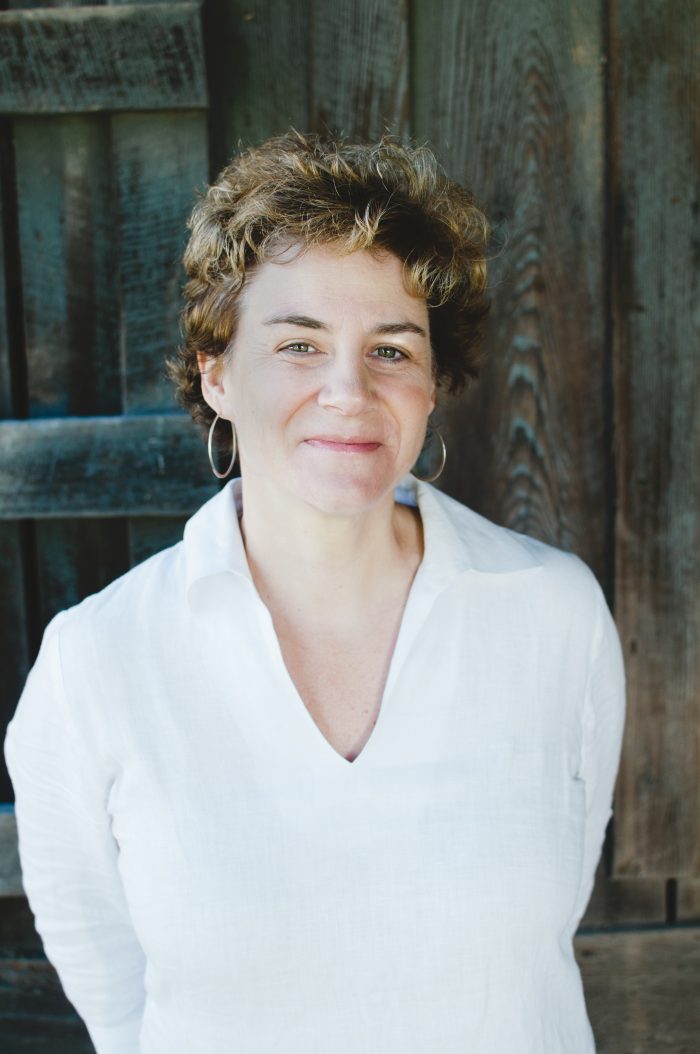LOCAL WARES & FARES EXPLORER: No, Salt Isn’t Just Salt!
 Nancy Bruns, Local Wares & Fares Explorer
Nancy Bruns, Local Wares & Fares Explorer
A friend came over the other day to help me prepare a meal for our families. She opened a cabinet in my kitchen and saw that it was nothing but salt. She knows I own J.Q. Dickinson Salt-Works, but she still thought this was unusual.
What’s with all of the expensive salts filling the shelves of gourmet stores? How different can one salt be from another? Why do I have a cabinet in my kitchen that is devoted to more than 50 kinds of salt? Am I some sort of weird salt hoarder?
My name is Nancy, and I love salt.
My collection actually comes from a place of curiosity. Every salt tells a small story about its source. Is it mined in in the Himalayas? Or, is it made from the deep, mineral rich waters of the Pacific near Japan? Is it evaporated on the shores of the Atlantic Ocean, in northwest France? Or, does it come from a trapped ancient sea under the Appalachian Mountains? Each salt will have a slightly different flavor profile due, not to some strange difference in how the sodium and chlorides form, but to the minerals, such as magnesium, calcium and potassium, that cling to the salt molecules when they crystallize. There can be dozens present. Just a trace can alter the flavor of the salt and how it interacts with food. How cool is that?
People often ask me if I think our salt is better than other salts. I am partial to it, of course, but it is different, not necessarily better. Each salt is an experience. Taste them. Now is a great time to experiment. Slice a tomato or a melon and start sprinkling. Notice the different crystal shapes. Are they thin, delicate flakes or chunkier crystals? What about the size? Are the crystals small like grains of sand or big and square? Are they translucent or opaque? Is the flavor of the salt subtle or bold? Is there a brininess to the taste like being at the beach? Maybe it has a hint of minerality? How is the salt enhancing the characteristics of the food? Each salt will have subtle differences. (This is starting to sound like a wine tasting. That’s right! Salt has “terroir” too!) That’s what having a cabinet full of salts can do for you!
My feeling is that if I’m going to salt my food I want to choose that salt with as much care as I choose the tomato at the farmer’s market. I want to know how it’s made and who made it. It’s an ingredient in my cooking. I don’t want additives in my salt. I want a natural product that is made with care. Salt should enhance your experience, not just make it saltier. A little bit is often all that is needed. Try a new salt today and learn its story!
Enjoy the adventure!
Read more explorer blogsBIOGRAPHY
Nancy Bruns (’84) is the C.E.O. and Co-Founder of J.Q. Dickinson Salt-Works in Malden, WV. She and her brother, Lewis Payne, and his wife Paige, (parents of Cameron ‘2018) revived the salt industry in the Kanawha Valley in 2013. Their ancestor, William Dickinson came to the area in 1813 to pursue an opportunity in salt and the family extracted the mineral until 1945. J.Q. Dickinson Salt-Works is located on the same land where the family industry thrived for more than 130 years.
Nancy went on to Bucknell University after graduating from St. Tim’s in 1984. She received degrees in Political Science and Art History. She continued her education at New England Culinary Institute to pursue her love of food and cooking.
Most of her career has been spent in the food industry which led her to seize the opportunity to fill a niche market with a high quality, sustainably produced American artisanal salt. Nancy values partnerships with other producers and artisans that promote West Virginia and Appalachia.
This post was last updated on March 17, 2022








